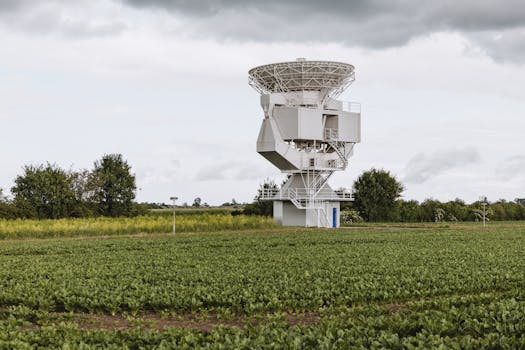GEO Satellites: Understanding the Technology and Applications of Geostationary Orbit Satellites

GEO Satellites: Introduction to Geostationary Orbit Satellites
GEO satellites, or geostationary orbit satellites, are a type of satellite that orbits the Earth at an altitude of approximately 35,786 kilometers (22,236 miles) above the equator. At this altitude, the satellite’s orbital period matches the Earth’s rotational period, allowing it to remain stationary relative to a fixed point on the Earth’s surface. This unique characteristic makes GEO satellites ideal for a variety of applications, including telecommunications, navigation, and weather forecasting.
GEO satellites have been in use for several decades, with the first geostationary satellite, Syncom 2, launched in 1963. Since then, the technology has improved significantly, with modern GEO satellites offering higher bandwidth, greater power, and more advanced capabilities. Today, there are hundreds of GEO satellites in orbit, providing a range of services to users around the world.
Applications of GEO Satellites
GEO satellites have a wide range of applications, including telecommunications, navigation, weather forecasting, and Earth observation. In the field of telecommunications, GEO satellites are used to provide broadband internet access, television broadcasting, and mobile network services. They are particularly useful for providing connectivity to remote or underserved areas, where traditional terrestrial infrastructure is lacking.
In navigation, GEO satellites are used to provide location information and timing signals, which are essential for GPS (Global Positioning System) and other navigation systems. Weather forecasting is another important application of GEO satellites, as they can provide high-resolution images of cloud patterns, sea surface temperatures, and other meteorological data.
Earth observation is another significant application of GEO satellites, as they can provide detailed images of the Earth’s surface, allowing for monitoring of natural resources, tracking of climate change, and detection of natural disasters. GEO satellites are also used for military and government applications, such as surveillance, communication, and navigation.
Advantages and Disadvantages of GEO Satellites
GEO satellites have several advantages, including their ability to provide continuous coverage of a specific region, high bandwidth, and long orbital lifespan. They are also relatively easy to maintain and operate, as they can be controlled from a single location on the Earth’s surface.
However, GEO satellites also have some disadvantages. One of the main limitations is their high launch cost, which can be prohibitively expensive for some organizations. Additionally, GEO satellites are susceptible to interference from other satellites and terrestrial systems, which can affect their performance and reliability.
Another significant challenge facing GEO satellites is the risk of orbital congestion, as the number of satellites in geostationary orbit continues to grow. This can lead to increased interference, collisions, and other safety concerns. To mitigate these risks, satellite operators and regulatory agencies are working to develop new standards and guidelines for the operation of GEO satellites.
Future Developments in GEO Satellites
Despite the challenges facing GEO satellites, the technology continues to evolve and improve. One of the most significant trends in the industry is the development of high-throughput satellites (HTS), which offer greater bandwidth and capacity than traditional GEO satellites. HTS satellites use advanced technologies, such as spot beams and frequency reuse, to provide faster and more efficient connectivity.
Another area of development is the use of electric propulsion systems, which can significantly extend the orbital lifespan of GEO satellites. Electric propulsion systems use electrical energy to accelerate ions or other particles, generating a high-specific-impulse thrust. This allows satellites to maintain their position and altitude for longer periods, reducing the need for costly and complex orbital maneuvers.
In conclusion, GEO satellites play a vital role in modern telecommunications, navigation, and weather forecasting. While they have several advantages, including high bandwidth and long orbital lifespan, they also face significant challenges, such as high launch costs and orbital congestion. As the technology continues to evolve, we can expect to see new developments and innovations in the field of GEO satellites, enabling them to provide even more efficient and reliable services to users around the world.
Focus Keyword: GEO satellites, the technology and applications of geostationary orbit satellites are constantly evolving, with new developments and innovations emerging all the time. Whether you’re interested in telecommunications, navigation, or weather forecasting, GEO satellites are an essential part of modern life, and their importance will only continue to grow in the future.